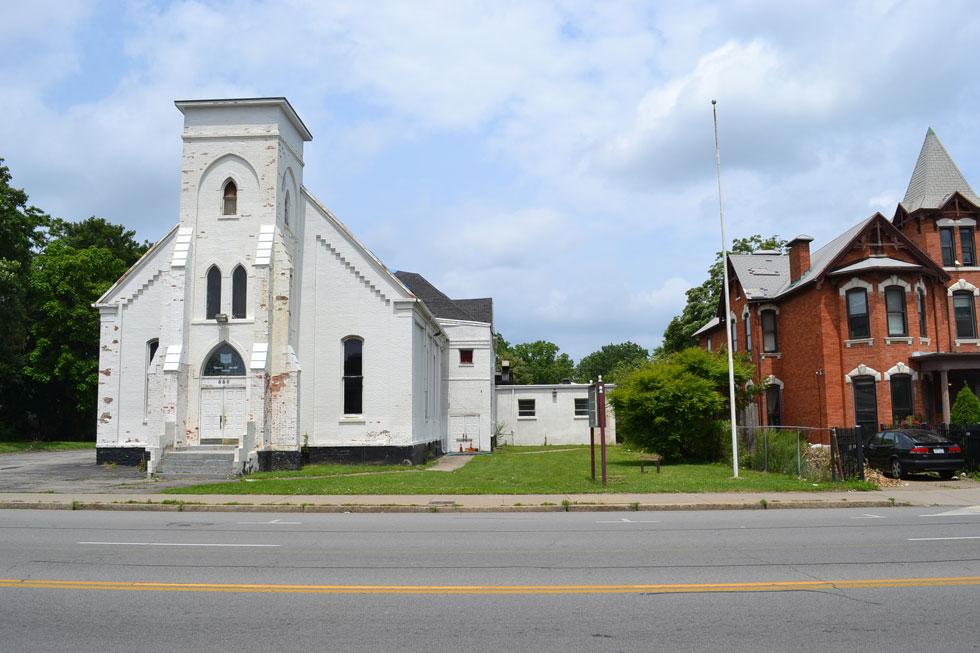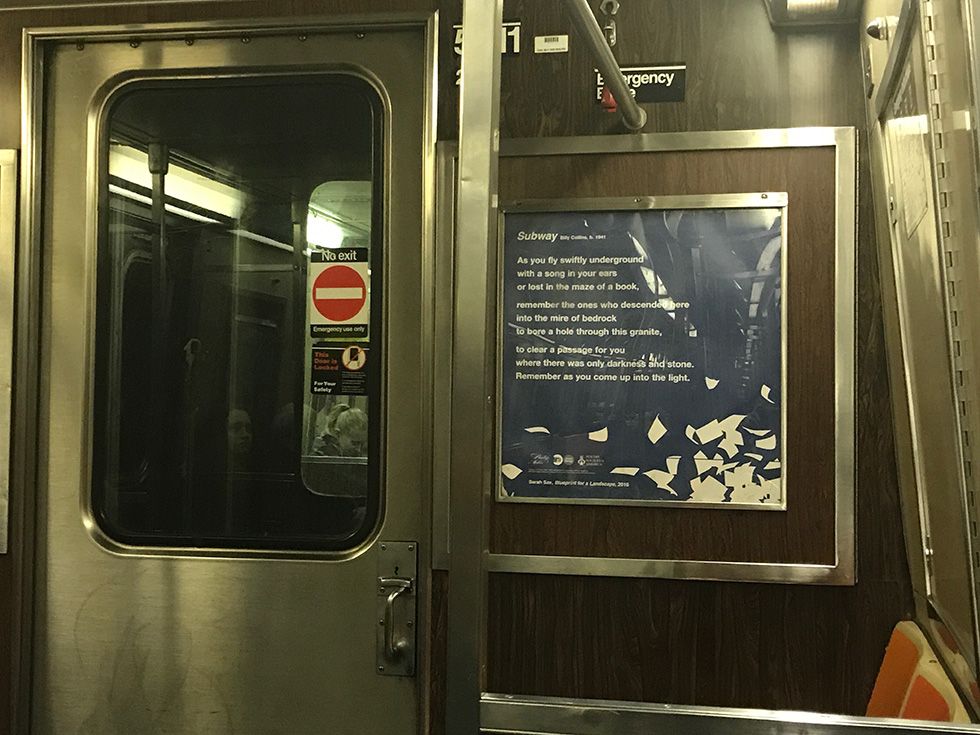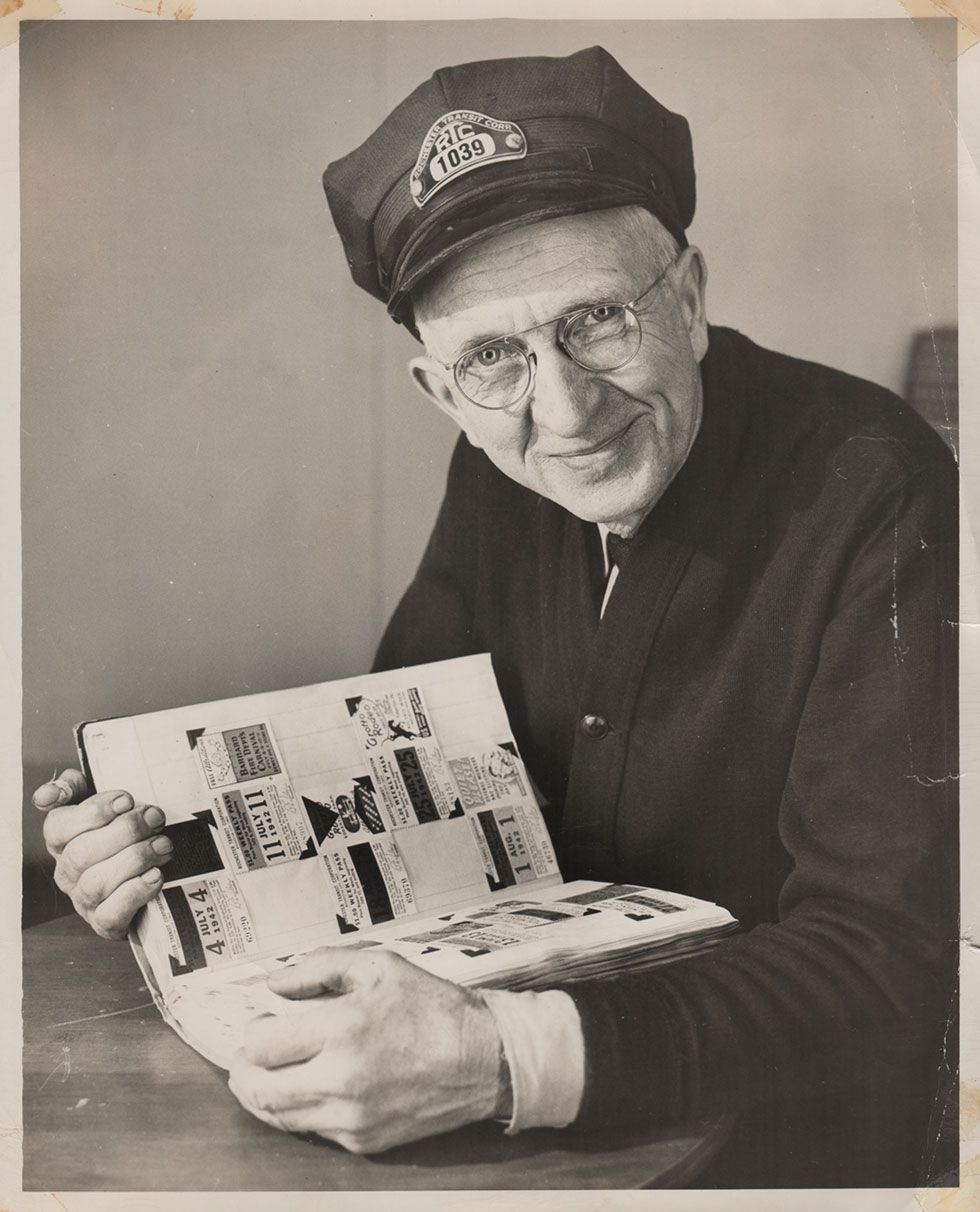This article was scraped from Rochester Subway. This is a blog about Rochester history and urbanism has not been published since 2017. The current owners are now publishing link spam which made me want to preserve this history.. The original article was published December 06, 2012 and can be found here.

Last week Rochester's Zoning Board heard public testimony, both in favor of, and in opposition to a developer's plan to demolish a historic church at 660 W. Main St. in Rochester and replace it with a Dollar General store. Of all the comments made during that 2-3 hour hearing, the one drawing the most buzz was made by a member of the Zoning Board itself, Patrick Tobin

. As an article in the D&C

recounted, this board member expressed frustration that, "while preservationists and others urge them to protect these buildings, little is done to keep the structures from falling into severe disrepair."
Mr. Tobin's comment is similar to one I hear in the comments section of this blog quite frequently where preservation vs. demolition cases are discussed. Let me paraphrase... "If you loved the building so much then why didn't you 'preservationists' do something about it until now? Why'd you wait until the property owner wants to tear it down?" There are so many things wrong with this line of thought there isn't a comment box big enough for me to fit an answer in to.
Coincidentally (or should I say, as luck would have it), Wayne Goodman, Executive Director of the Landmark Society, stepped up to the podium immediately after Mr. Tobin's comment was fired at the preservation community. And, as I expected, Goodman took great exception to the remarks.
So I reached out to Goodman and asked him to help us understand why preservationists don't do a better job of keeping these "historic" buildings from falling into disrepair. Goodman sent me the following statement...

"The Landmark Society was contacted by Rochester Subway to offer comment regarding the proposed demolition of a historic church located on West Main Street, in the Susan B. Anthony neighborhood. Actually, two historic properties are proposed for demolition, to be replaced with a Dollar General store. The City of Rochester's ZBA held an input hearing on Thursday, November 29 to accept public comment on the demolition request, submitted by the owner of the church building, Marvin Maye. The Landmark Society was present, and we offered our opinion that this is not the best option. We also resubmitted our offer of assistance in establishing a sound engineering opinion of the building's structural condition by a third-party, independent engineering firm. As the Democrat and Chronicle reported, during that hearing, a couple members of the ZBA expressed frustration . . . not at the property owner for allowing the further and continued deterioration of his property, but they actually expressed frustration at the preservation community for not being proactive enough in preserving these buildings before someone asks them for permission to demolish them. I know I join many in the preservation community (and others NOT in the preservation community), that this statement is unfair, unrealistic and severely flawed in many respects.
First, some background. The church building is a Designated Building of Historic Value, as designated by the City of Rochester, and has been for many years. This means the building can not be demolished without a zoning variance. In other words, local code calls for the protection of this building. Why? Because protected historic resources assist in stabilizing districts. They provide confidence to investors. They demonstrate community pride and act as catalytic engines in furthering revitalization and increasing overall investment. The church building is one of those designated structures. A property owner would need to get an exception to the rule in order to demolish the building, and the owner would need to prove a number of factors for the ZBA to consider demolition, and those factors are not easily proven.
At last week's hearing several facts were asserted. Maye purchased the building a couple of years ago. He purchased it knowing it was protected, and he fully admits it. He also admits that he bought the building with the full intent to demolish it . . . a protected structure. Further, a neighbor stated at the hearing that Maye hired a crew to strip the building of any pieces of value - piping, wiring, metals, etc. She further stated that Maye confirmed this was his work crew. The neighbor asked the ZBA to check the 911 call recordings if they doubted her story, as she phoned to report what she thought were a burglary in progress. Multiple people testified that another development owned by Mayes is plagued with vagrancy and deterioration. They stated that multiple complaints about the property's upkeep have gone ignored. At least three organizations testified against the proposed Dollar General development. Many neighbors begged the ZBA to deny demolition, as they wanted the historic building to remain. These neighbors stated that they have invested heavily in their own homes' rehabs and maintenance. Some spoke of the multiple low-tier stores already in the area, which are similar to Dollar General, one of them only a few blocks away. The Landmark Society asserted that the many recent rehab projects in the area are making this a neighborhood that is clearly on the rise, stabilizing property values, an increasing number of local businesses and the overall appeal, making the neighborhood a better place to live and work. We also testified that we offered to provide Maye with an analysis of his building; we provided a grant to the local association to hire a "neutral" engineering firm to determine the true structural condition of the building. Maye did not accept our offer and he denied us access to the building. Maye was actually asked by a ZBA member if any of the "opposition" had toured the building. Maye's response was, "No. Not once." This was not because people did not ask; it was because he would not allow it.
So, to put it plainly, this is a situation where a buyer knowingly purchased a protected property. The owner purchased this protected resource with the clear and established intent to demolish it. The owner claims he did nothing to cause the current damage to the building, yet admitted to a neighbor that he was salvaging pieces of the building. The owner claimed that "not once" did anyone offer to tour the building to provide help, but did not volunteer tell the ZBA that this was because he denied access. The owner admits that he has never done anything to maintain the building during his ownership. The owner has a questionable track record of this very type of development. Multiple community organizations and the neighborhood organization spoke out against demolition. The City of Rochester was represented by Bret Garwood, who spoke against the demolition variance. The City of Rochester's own Project Review Committee called for the denial of demolition. The Rochester Regional Design Center opposed demolition. The Democrat and Chronicle published an editorial opposing demolition. Neighbors vehemently spoke in opposition. The neighborhood has witnessed several years of solid preservation projects that have led to jobs and have elevated the overall appeal of the entire area, yet the owner proposes a development that almost all would have to agree would lead to a decline in property values - a catastrophe for a neighborhood that, while on the upswing, is still in the balance. This is the situation. And, it was this situation that for some reason caused a couple of ZBA members to show "frustration" at the preservation community. The preservation community? That's like blaming a dentist for kids getting cavities. We are here to help, but we can't force a property owner to make good decisions any more than a dentist can barge in a home and rip the candy away from the kid.
For a legitimate governmental board to expect the preservation community to somehow monitor and maintain another person's property is outrageous. For them to expect the preservation community to monitor and maintain a protected property is even more outrageous. It is quite logical for one to assume a protected property is just that - protected. It is quite logical to assume that if a person buys such a protected property, then the new owner is going to maintain it. We, as the preservation community, have absolutely no legal authority to show up on someone's doorstep with tools in hand and start work. Further, we have no legal authority to act as the preservation police. We help preserve buildings, and in this situation we offered funding to assess its condition. We help with contractors. We help put deals together to utilize grants and/or tax credits. We help to promote businesses in historic buildings. We educate the community on the economic and social benefits of preservation. The Landmark Society has increased our services over the past two years, and we are one of the most active and respected preservation organizations in the nation. I am proud of that fact.
I sincerely feel for the property owners that could be impacted by this development. Some have lived in the area for years, witnessed the neighborhood at its lowest, but stuck it out. Now they see it building momentum only to be threatened with something purely avoidable. Some have lived there a short time, buying homes and buildings in need, investing in those structures, fixing them up and maintaining them. I feel for those dedicated individuals who placed trust in the neighborhood, who have followed the city's investment and private developers' investments with their own investments. Now those investments are at risk. I feel for them because these are the people who continue to do all the right things to bring a neighborhood back to life. And, unfortunately, these are the people who stand to lose if this project moves forward. These are members of the preservation community. They are not to blame for Mr. Maye's risky purchase or his unwillingness to maintain his property.
Maybe the ZBA members spoke out of general frustration with the entire situation. Maybe they chose the wrong words. I know that they do not have an easy job. What they do is tough. Much of their deliberation is not a black and white discussion. I get it. I realize that they volunteer for this role. And, I do realize that we all can do a better job, and we will continuously work to partner with others and be as proactive as possible. However, the mere insinuation that the preservation community is somehow to blame for the neglect of one's property, a protected property that was actually purchased with the intent to demolish it, is simply wrong. Given the hearing last week, with all the testimony, with the owner's admissions of neglect and of full intent to demolish a protected resource, with the widespread community opposition, with the owner's rejection of assistance, with the City of Rochester's opposition, with the Neighborhood Association's opposition, with the existing code screaming opposition . . . it would seem to me like this is the very reason the ZBA exists. They exist to protect those who are working to make our community a more vibrant and successful place to live, work and play. Until our Designated Buildings of Historic Value are provided the very protection that they "officially" have, then this unfortunate situation will repeat itself over and over again. If the ZBA approves the request for demolition, a strong message is sent: Buy a protected property, don't invest a dime into its upkeep, let it dilapidate, allow it to be an eyesore, ask to demolish it based on its poor condition and you will be granted that permission. Oh, and "frustration" will then be pointed at the preservation community for somehow allowing your protected property to fall into disrepair. That is a message that promotes property neglect. Period.
A message should be sent, however, that protected buildings are just that - protected. If you buy one, then you assume responsibility for that property. You don't have the right to neglect your property, ignore zoning law and then profit from the financial loss of neighbors who have done everything "by the book," who have taken the responsibility of property ownership seriously. Private property rights are on the side of those who actually maintain their property. I don't doubt that the church building was in need of repair when Marvin Maybe purchased it. However, when you buy a building that is protected, you assume responsibility for fixing the building. It is not a new concept, and countless examples of this are all over Rochester with old houses and buildings being purchased and renovated to serve as residences or businesses. Literally, these examples are everywhere.
We know that not every historic building can be saved. As a matter of fact, The Landmark Society is not opposing the demolition of the second property in question. We understand that not all situations are quite so clear. Many are gray and quite unclear. This one, however, is crystal clear. Although we are confused as to why a few members of the ZBA would express frustration at the preservation community, we also understand that there is always room for improvement. The Landmark Society will continue to seek out ways to serve the community even better. We will do our best to help the City of Rochester, and all of western New York, assess historic properties. We will work to elevate our role in assisting developers find ways to make rehabilitation projects profitable. The preservation community is not perfect, and I'm sure we've made our mistakes over the years. But, the preservation community is not at fault in any way with the situation surrounding the fate of this historic church building. We reached out to help and that help was rejected. We performed our role well. We ask that the ZBA now do the same and enforce the protection of this resource, as this is the very circumstance that necessitates protection.
About Wayne Goodman:
Wayne Goodman is the Executive Director of The Landmark Society of Western New York, beginning in January 2011. Wayne graduated with a Bachelor of Science degree from Ball State University and a Master of Arts degree from the University of Wyoming. He works with communities, local organizations and individuals to preserve historic resources of all varieties and routinely collaborates with real estate professionals, developers, architects and elected officials. Wayne worked for Indiana Landmarks, the nation's largest statewide preservation organization, until January 2011 - a tenure of ten years.
He serves on the Board of Directors of Preservation Action, the nationwide grassroots lobbying organization for preservation's voice in Congress. Wayne was actively involved in many local heritage organizations across Indiana and is becoming more involved with local organizations in Western New York. Wayne served as a member of the Graduate Faculty at Ball State University's College of Architecture and Planning from 2006-2011, where he instructed architecture and preservation courses.


